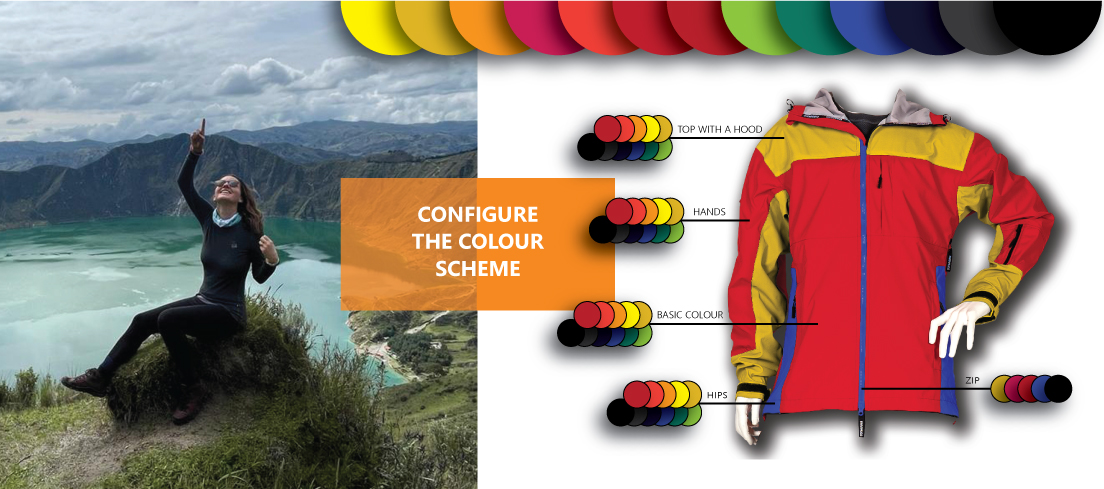
Material properties and maintenance
Premium quality at a reasonable price. Functional nanomembrane materials Nanomembrane® and Respilon®. Experience from polar explorers in Antarctica. 100% Czech production. We provide a 3-year warranty and full service.
How does nanomembrane work?
Nanomembrane® is laminated in a micro-layer between the outer fabric and the lining. The material is then waterproof, it will not let water pass towards the body, but the vapour molecule will pass in the opposite direction. It therefore allows breathing from the body out. And it's an absolute wind barrier. For more, see the blog article. No harmful PTFE is used in the production process.
Why do we sew with nanomembrane? NANOMEMBRANE has unique properties that no other membrane in the world can compete with. The material has high thermal stability at both high and extremely low temperatures, during washing and mechanical stress. In terms of vapour permeability, it outperforms the values of competitors on the market. It allows lamination even on flexible materials. So the fabric adapts to the body and does not restrict movement. The nanofibre membrane is very light, solidly hydrophobic and oleophobic. The HYDROPHOBIC EXTREME surface treatment helps to keep liquids off the surface. The excellent properties of the nanomembrane are therefore not compromised. The application does not work with harmful C8 fluorine. C6 is a "greener" substitute, the fluorine free form is environmentally friendly. But it only has a hydrophobic effect, it does not prevent spotting. A DWR finish should work with a fading effect for a minimum of 5 washes if all the rules are followed. And we have the membranes bonded to the fabric spot-on, not flat. That's when the glue is all over the place and the properties of the membrane deteriorate.
Innovation of Nanomembrane® version 2024 versus the original 2015:
-it is more resistant to mechanical damage and thus longer lasting (I've been wearing the 1st jacket since 1/2015 and it is functional)
-it is ecologically produced without harmful and long-lasting PTFE and PFCs
-has a slightly lower vapour permeability, but is still about 30% above most competitors
-has a higher water column than the original version
What are you looking for in membrane fabrics? We can help you with the terms vapour permeability, breathability and hydrostatic resistance to help you find your way around (as the outdoor specialist market often gets it wrong).
Vapour permeability *) - this is the permeation of sweat in the form of water vapour away from the body to the outside. Wicking away heat and moisture, through underwear, sweatshirt and jacket. So, all layers must be vapour permeable. Vapour permeable is not plastic.
Breathability is air permeation in reverse, from the outside to the body. Breathable is the underwear, the sweatshirt. But it can't be a windbreaker. We'd freeze in a cold wind. In summary, we're all vapour permeable in about 3 layers. Breathable only 2.
Hydrostatic resistance - that's the third property of the membrane. It's the amount of water column the material can resist. Or water resistance. The water column is measured in ideal conditions and on a stretched piece of fabric. Field practice is quite different. It depends on the top water repellent treatment, humidity, rain intensity, garment size (is it too tight for me?), pack pressure, etc. Only plastic is waterproof. So membrane clothing is not literally waterproof, it is only waterproof to a certain extent.
And this is where I have to consider what I prefer. Vapor permeability and hydrostatic resistance go drop for drop against each other, they don't work together. An increase in the value of one is accompanied by a decrease in the value of the other. It's a difficult science to reconcile so that everything works and the customer is satisfied.
*) Vapor permeability is given in MVTR. In g/m2/24 h. That is, how many grams of water vapour pass through 1 m2 of fabric in a 24 hour period. A higher value is better. Of course, a more perfect method is Ret, Pa.m2/W. It is much more accurate for practical use, it also takes into account air humidity. Faramugo no longer lists MVTR. And the values of vapour permeability and water column are measured by different methodologies, depending on the world region. So sometimes we are comparing apples and pears.
In 2024 we are gradually switching to a new 3L technical laminate lining. The reason for this are clear bonuses:
a) higher water column - confirmed by long-term measurements (22,000 mm and 19,000 mm after 10 washes)
b)the tape adheres significantly better to this lining, thus guaranteeing a longer lifetime of glued seams and reducing the risk of repairs (lower material weight = easier gluing = longer joint life)
c)higher vapour permeability of the laminate, which is due to the approx. 8 g/m2 thinner lining
d)lower material weight, which means a lighter and more packable jacket or trousers
e)the lining is of Czech production. Thus, it reduces the ecological load by less transport requirements
Does not apply to cotton products. Here the original black lining remains. These are hardshell technical jackets and trousers.
IMPORTANT! With membrane fabrics we always solve the dilemma of vapour permeability vs. water column, quid pro quo. Nano-membrane = superior vapor permeability, lower water column. Not bad, just slightly lower. There are a number of methods of measuring parameters. The differences will be significant in lab conditions versus field measurements. Min 60% of the marketed information is nonsense, pure marketing. Things can't even be measured reliably (100,000 water column). Faramugo is not lying, we are trying to offer quality. The measurement methods of our suppliers are amongst the toughest. Which can visually reduce the numbers. It's then up to the customer to decide how to interpret the information. Even to an informed outdoorist, the numbers don't tell us much. I can't tell the difference between MVTR 30 or 45k... But I can tell how good I feel in a jacket.
Washing nanomembrane clothes.
Select the gentle wash programme at 30°C. Wring up to 800 rpm. Wash ideally 1 - 2 times a year. This depends on the time and conditions when the clothes are used. Use a detergent designed for membrane garments. According to Nanomembrane, e.g. Nikwax, Toko, and Granger's. You can buy it in outdoor stores. According to Nanomembrane and TUL tests, we can recommend Perwoll Sport. Expensive products will be good, but Perwoll will also do the job. Never use fabric softener. Important! After each wash, iron the product (through the fabric, for example cotton). This will activate the nanoparticles that repel water, oil and other dirt. It is recommended to wash double-layer laminates separately (i.e. 2L with fleece). Feather products with a membrane are recommended to be washed with a detergent designed for feathers. If dry cleaning is required, please consult us. For pro clothing (ski areas, etc.) a more durable membrane is usually used and this will withstand it. One final piece of advice: do not use bleaching agents, tumble dry on a gentle outdoor programme, but never in bright sunlight. And a little final advice - zip up all zippers before washing. And put the garment in a bag (perforated fabric, cotton).
Impregnation of nanomembrane clothing.
HE (Hydrophobic Extreme) is applied to the fabric from the factory. This repels water and creates a droplet, so-called lotus effect. When is it a good idea to renew the waterproofing of the fabric surface? Ideally, when the droplets have stopped forming on the material. Even so, iron after washing. As a next step, you can impregnate the surface. We don't have a recommended impregnation. You can apply any that is designed for membrane fabrics, such as Nano Concept or Ademm.
There are two concepts at play - waterproof and waterproof. A waterproof material is not completely waterproof. It is impregnated, a layer is formed that should not seal the surface of the materials. It would also become impermeable to water vapour and we'd be partying like hell in a jacket like that. Anyone who's been there knows.... The material is coated with a specific water-repellent substance. The nano-impregnation achieves a surface tension that pushes away water droplets, which run off thanks to the lotus flower effect. The fabric will therefore survive spring rain, but the jacket will still get wet in heavy and persistent rain - the water droplets will eventually push their way through the fabric (which is only prevented by the membrane).
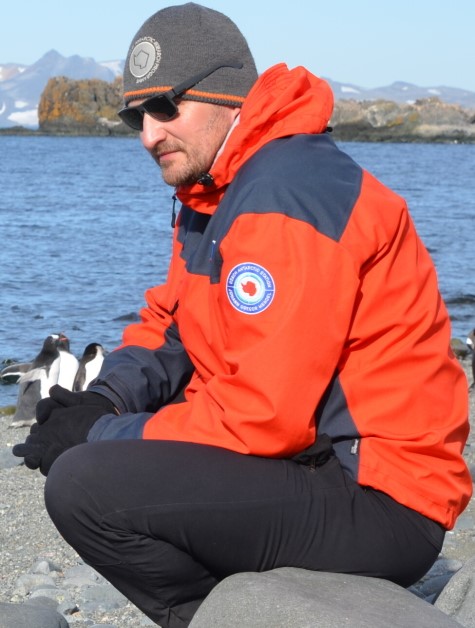 Jacket
Jacket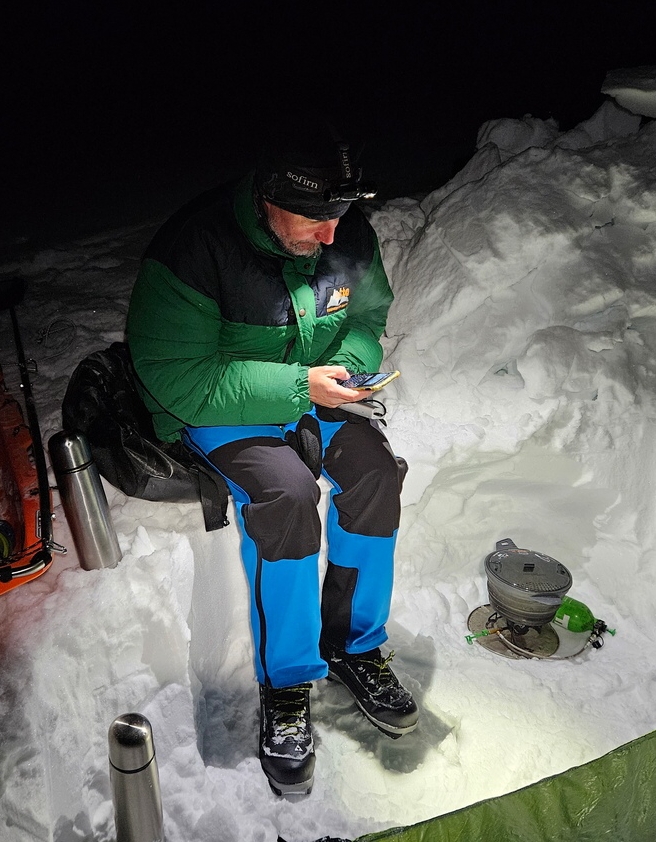 Pants
Pants 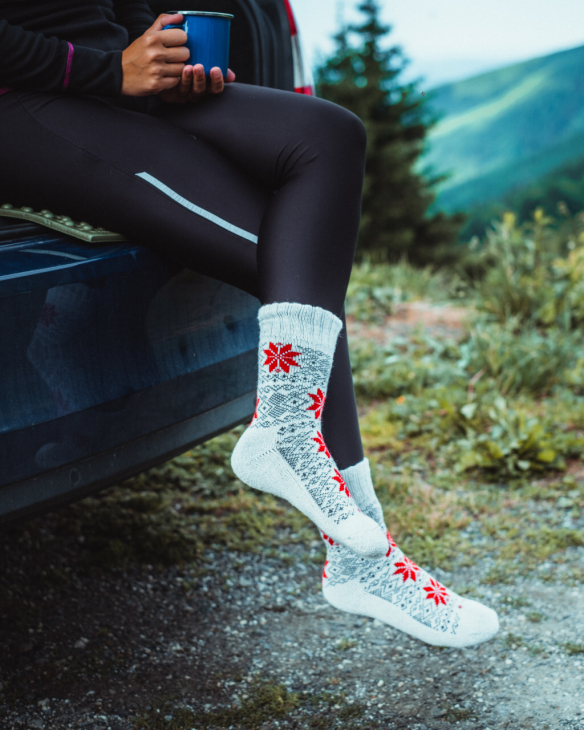 Underwear and accessories
Underwear and accessories Travel books
Travel books 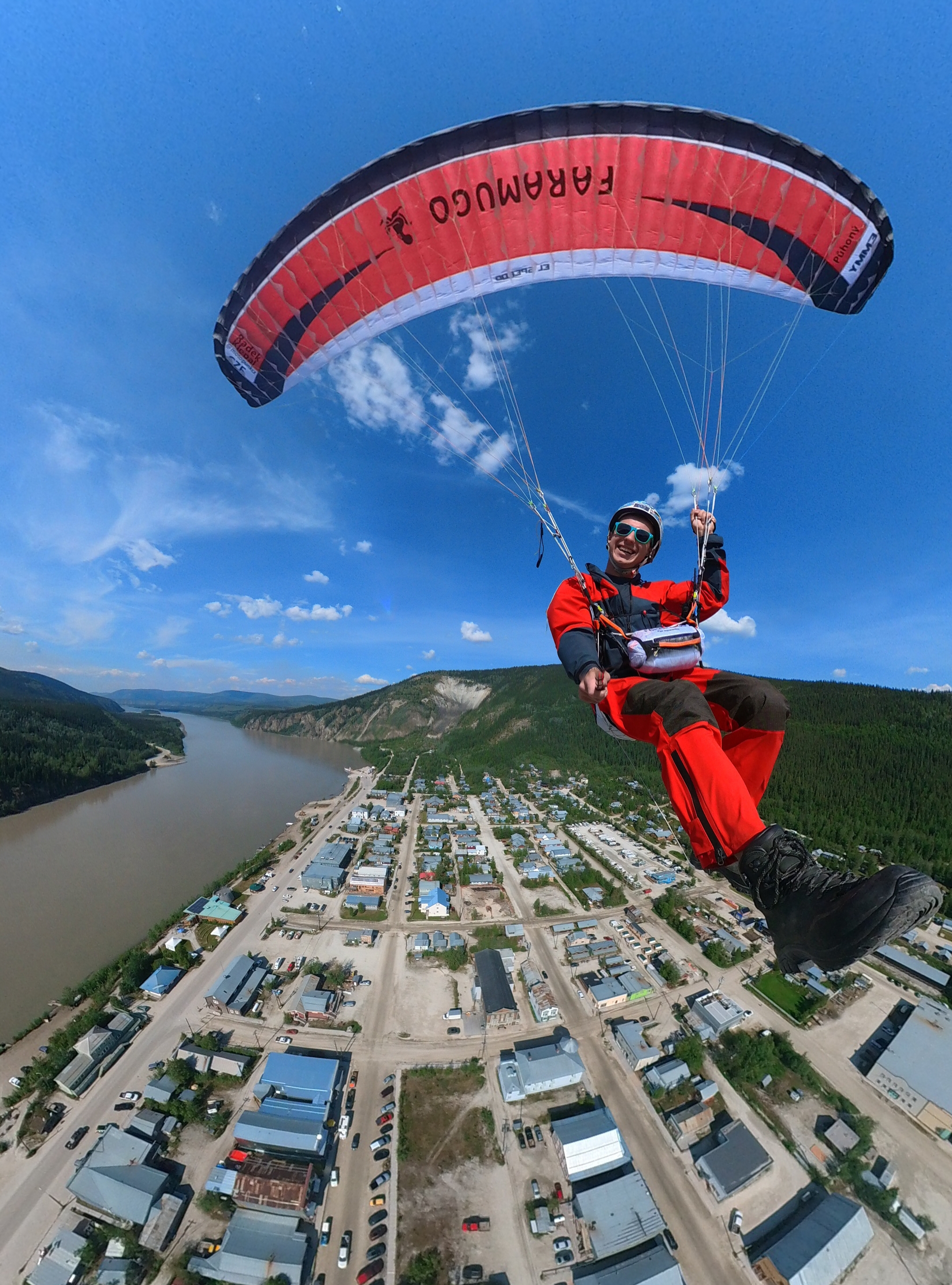 Bags, rucksacks, sacks
Bags, rucksacks, sacks 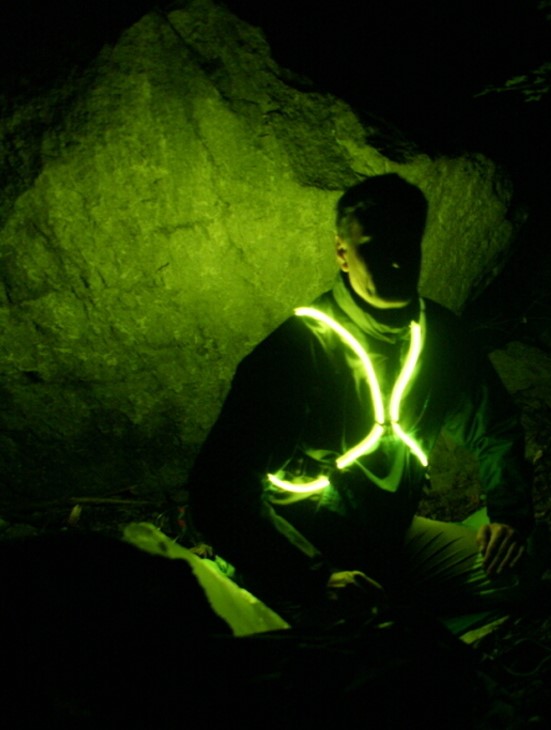 Active LED lighting
Active LED lighting